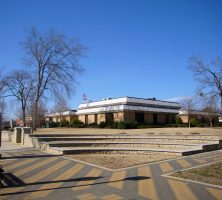When it was carved out of Elbert and Franklin counties in 1853, Hart became the only county in Georgia named for a woman.
A fiercely patriotic frontierswoman, Nancy Hart gained renown during the Revolutionary War (1775-83) for her determined efforts to rid the area of Tories (British sympathizers) and British soldiers. Her real and mythic exploits have become the stuff of local legend.

Hart County’s position between Georgia and South Carolina has fostered strong commercial and demographic ties to both states. With Hartwell serving as its county seat and the center of local trade and crop processing, Hart followed an economic pattern fairly typical of Georgia’s Piedmont counties in the twentieth century. When the boll weevil crisis hit just ahead of the Great Depression, the county’s population fell from roughly 18,000 in 1920 to scarcely 15,000 a decade later; it would be a half-century before the county regained its 1920 population levels. As the cotton industry declined after World War II (1941-45), many Hart County residents moved away from farming and into jobs at the local apparel and textile plants.
Population numbers began to climb with the construction of Hartwell Dam. The dam converted the Savannah River and some of its tributaries into Lake Hartwell, which, with nearly 1,000 miles of shoreline, would become one of the largest man-made bodies of water east of the Mississippi River. Construction began in 1955 and concluded in 1963, bringing in many new workers and opportunities for outdoor recreation.

Both population and visitor numbers continued to grow as Lake Hartwell and its natural surroundings and amenities—including marinas, campgrounds, and golf courses—attracted people from around the Southeast. Hartwell’s population expanded by 30 percent between 1970 and 2000, and the county began to attract more permanent residents, especially retirees from Atlanta and the North.
According to the 2020 U.S. census, the population of Hart County is 25,828. By the early twenty-first century, the local economy had diversified to include agriculture and horticulture, high-tech industry, and tourism-related businesses. These developments were supported in part by the county’s strategic location between Atlanta and Charlotte, North Carolina, on the Interstate 85 corridor and by its close proximity to the University of Georgia, Athens Technical College, and Clemson University in South Carolina.
Prominent natives of the county include J. J. Brown, the state’s eighth agriculture commissioner, and writer Terry Kay.









